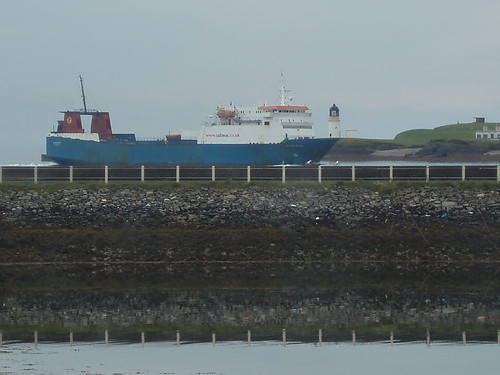
After the problems surrounding the ferry Isle of Lewis, which decided to dispute passage with the town of Birkenhead, the lifeline service between Stornoway and Ullapool has gone back to normal. Fellow blogger Tony has highlighted the issues surrounding the freight ferry Muirneag, which was out of action this week either because of bad weather (what bad weather?) or on account of its steering gear being faulty. The Muirneag carries our freight, varying from roofbeams to cans of catfood. However, she is an old lady of the seas, starting life in 1979 and plying various routes in northern Europe before coming to Stornoway in 2002. Muirneag will be scrapped in 2013.
The reason for the cancelled sailings are two-fold. First of all, her manoeuverability is poor, and the fact that she carries light loads means she is high out of the water, making her susceptible to high winds. The second reason goes back just over 6 years, to events on 11 November 2005. Muirneag ventured out to sea, hoping to beat the forecast storm. Unfortunately, the Met Office was late issuing its storm warning, meaning that she was forced to go with the force 12 winds and ended up 60 miles north of the Butt of Lewis, well on her way to the Faeroes. Since that hairy episode, Calmac have been justifiably cautious with her sailings. And I'd rather have Muirneag stuck in port than stuck on the bottom of the Minch.
Muirneag is named after this hill in the north of the island, 4 miles west of North Tolsta.
